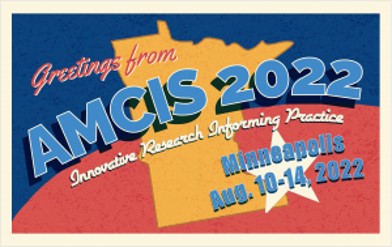SIG HIC - Human Computer Interaction
Loading...
Paper Type
Complete
Paper Number
1114
Description
Pop-ups have been widely used to control users’ attention, causing a high degree of irritation and dissatisfaction. We explore so-called ‘polite’ pop-ups, i.e., pop-ups implemented into the interface eliminating the intrusive and surprising factors. We hypothesize that: H1) Users pay less attention to, and interact less with, polite pop-ups than traditional pop-ups, and; H2) Users perceive a higher degree of trust in applications with polite pop-ups compared to traditional pop-ups. The research approach includes: i) comparative user tests with 88 participants; ii) observations of user tests; iii) assessment questionnaire, and; iv) data-driven analysis of interaction patterns. We analyze the data through the theoretical lens of trust and show that users pay less attention to, yet perceive a higher degree of trust. Our contributions include conceptualizing ‘polite’ design elements and the research agenda of Polite Interaction Design that aims to capture users’ attention without causing unpleasant experiences or decreased trust.
Recommended Citation
Islind, Anna Sigríður and Willermark, Sara, "Polite Interaction Design: Capturing the Users Attention Without Compromising their Experienced Trust" (2022). AMCIS 2022 Proceedings. 1.
https://aisel.aisnet.org/amcis2022/sig_hci/sig_hci/1
Polite Interaction Design: Capturing the Users Attention Without Compromising their Experienced Trust
Pop-ups have been widely used to control users’ attention, causing a high degree of irritation and dissatisfaction. We explore so-called ‘polite’ pop-ups, i.e., pop-ups implemented into the interface eliminating the intrusive and surprising factors. We hypothesize that: H1) Users pay less attention to, and interact less with, polite pop-ups than traditional pop-ups, and; H2) Users perceive a higher degree of trust in applications with polite pop-ups compared to traditional pop-ups. The research approach includes: i) comparative user tests with 88 participants; ii) observations of user tests; iii) assessment questionnaire, and; iv) data-driven analysis of interaction patterns. We analyze the data through the theoretical lens of trust and show that users pay less attention to, yet perceive a higher degree of trust. Our contributions include conceptualizing ‘polite’ design elements and the research agenda of Polite Interaction Design that aims to capture users’ attention without causing unpleasant experiences or decreased trust.
When commenting on articles, please be friendly, welcoming, respectful and abide by the AIS eLibrary Discussion Thread Code of Conduct posted here.



Comments
SIG HCI